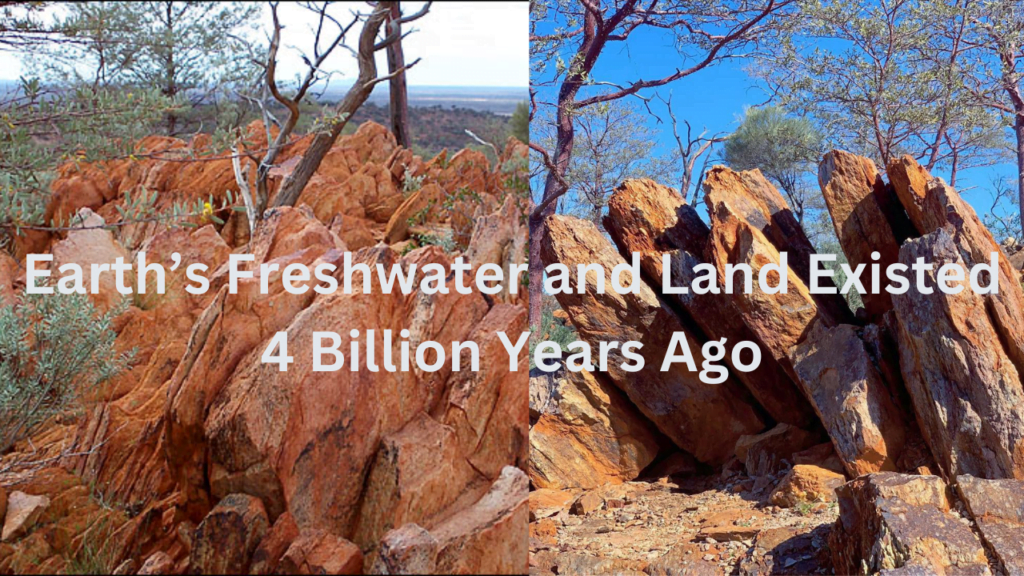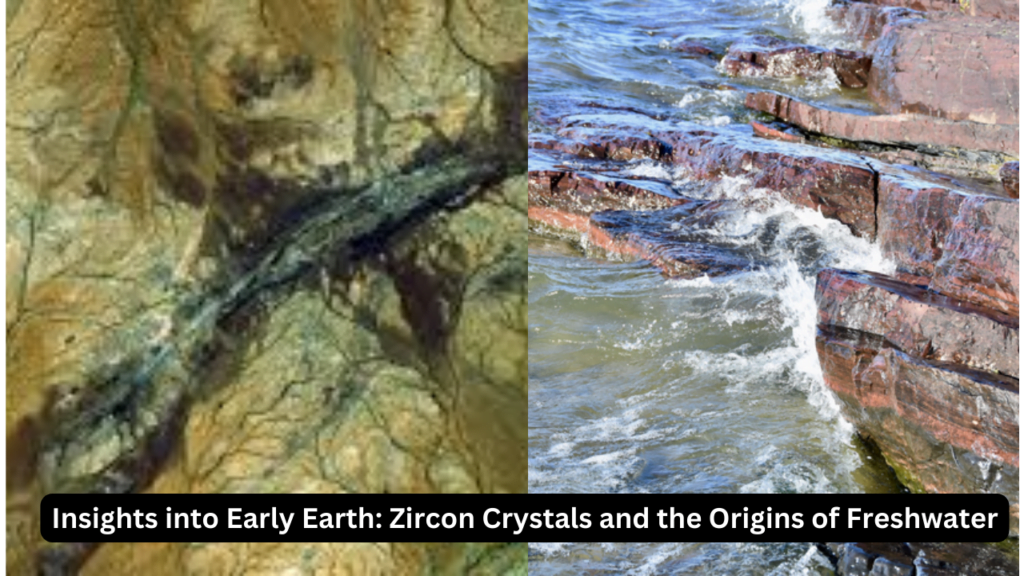A recent study of crystal grains revealed embedded in Australian outback rock suggests that Earth had both freshwater and dry land around 4 billion years ago, contrary to earlier scientific beliefs that the planet was completely covered in ocean.
A research published in the journal Nature Geoscience on Monday stated that chemical hints found in the crystals indicated that fresh water was present when the hot, molten rocks from which they originated formed the crystals.

According to a news release, lead study author Hamed Gamaleldien, an adjunct research fellow at Curtin University’s School of Earth and Planetary Sciences in Australia and an assistant professor at Khalifa University in the United Arab Emirates, “found unusually light isotopic signatures as far back as four billion years ago by examining the age and oxygen isotopes in tiny crystals of the mineral zircon.” “Hot, fresh water typically alters rocks several kilometers below Earth’s surface, resulting in the production of such light oxygen isotopes.”
According to Gamaleldien, the only explanation for the evidence of fresh water might be the presence of dry land, where water would gather and eventually seep into the continental crust.
Here, we have two crucial items. We have found typical evidence for dry terrain above the sea as well as the oldest evidence of fresh water,” he continued.
According to the findings, the water cycle on Earth—which is the movement of water via evaporation and precipitation between the land, seas, and atmosphere—was in motion at that time.
According to the findings, the blueprint for the origins of life existed far earlier than the dinosaurs or even the first known microbial life, fewer than 600 million years after Earth’s birth. According to Gamaleldien, stromatolites—a kind of fossilized bacteria that formed mounds in hot springs 3.5 billion years ago—are the earliest generally accepted evidence of life, including fresh water.
Hugo Olierook, a senior research fellow at Curtin’s School of Earth and Planetary Sciences and study coauthor, said in a statement that the discovery “not only sheds light on Earth’s early history but also suggests… landmasses and fresh water set the stage for life to flourish within a relatively short time frame — less than 600 million years after the planet formed.”

Insights into Early Earth
“The findings provide new insights into the early history of Earth and pave the way for more research into the origins of life,” he continued.
Because geologists lack the materials necessary to analyze rocks so ancient, the Hadean Eon, which spanned from 4.5 billion to 4 billion years ago, is the oldest period in Earth’s history and a poorly known geological black age. At 4 billion years old, the oldest rocks are known to exist.
What then makes zircon crystals a window into the planet’s prehistoric past? Rock that is younger can be bonded into the very durable microscopic mineral grains. The study’s zircons were discovered in orange sandstone that was 3.1 billion years old and came from Western Australia’s Jack Hills formation, an outcrop of weathered rock.
“Zircon is a special kind of mineral. It is extremely resilient and doesn’t change with time, according to Gamaleldien. “It is the sole relic from the Hadean era.”
Researchers extracted, mounted, and polished 2,500 zircon grains—roughly the size of two or three human hair strands—to arrive at their conclusions. They then dated 1,400 of the zircons and measured various oxygen isotopes, or variations, inside the zircons.
According to Gamaleldien, rainfall includes lighter oxygen isotopes that are less prone to evaporation than heavier oxygen isotopes seen in salt water. He stated that isotopic evidence of meteoric or fresh water was found in two zircon crystals, one of which was 4 billion years old and the other 3.4 billion.
The researchers used a computer model to run 10,000 simulations of the composition of zircons, simulating how hot molten rocks mingled with rainfall, saltwater, or a mixture of the two. They discovered that the light isotopic signature of their zircons could only be explained by the presence of some fresh water.
Also Read: Polar Ice Melting Decelerates Earth’s Rotation: Insights from Recent Study






